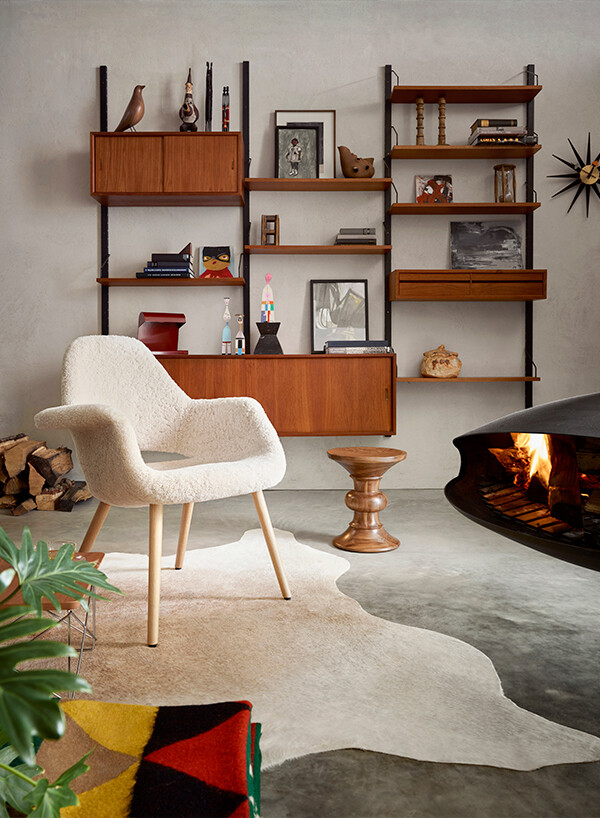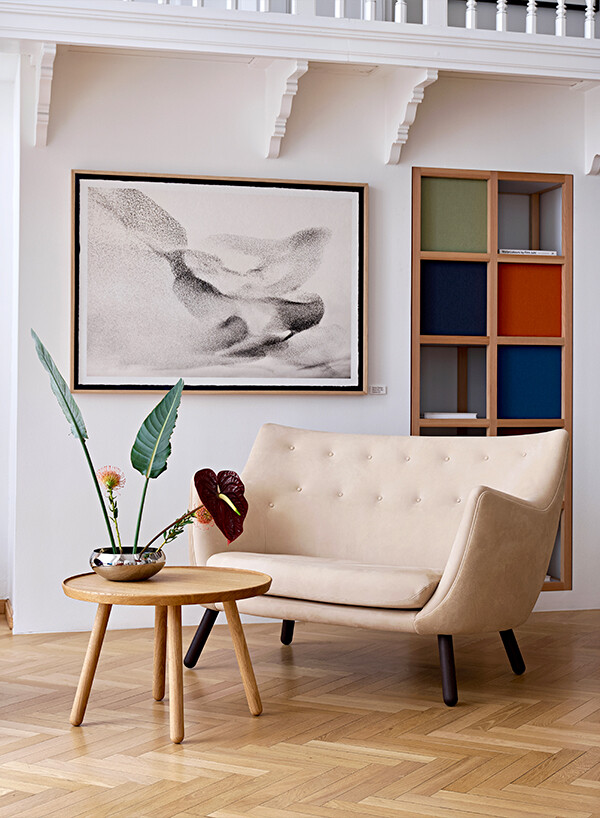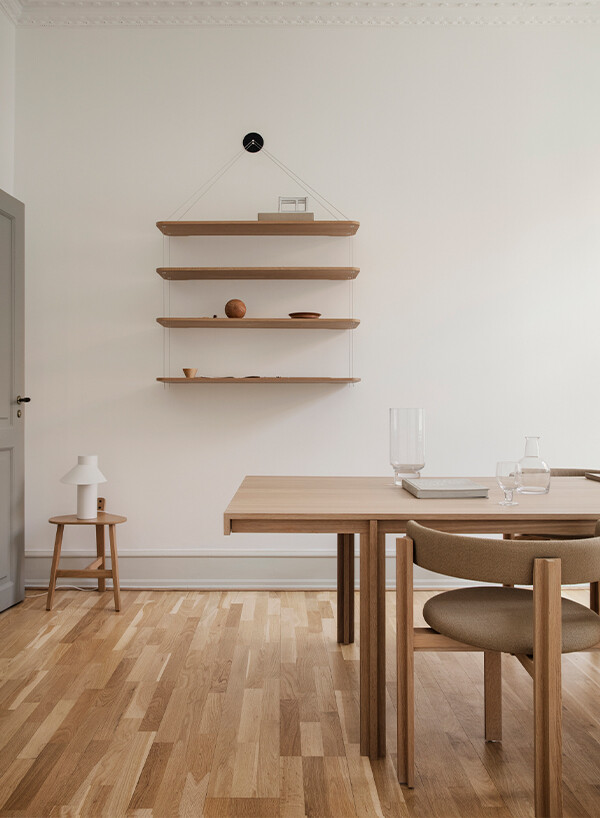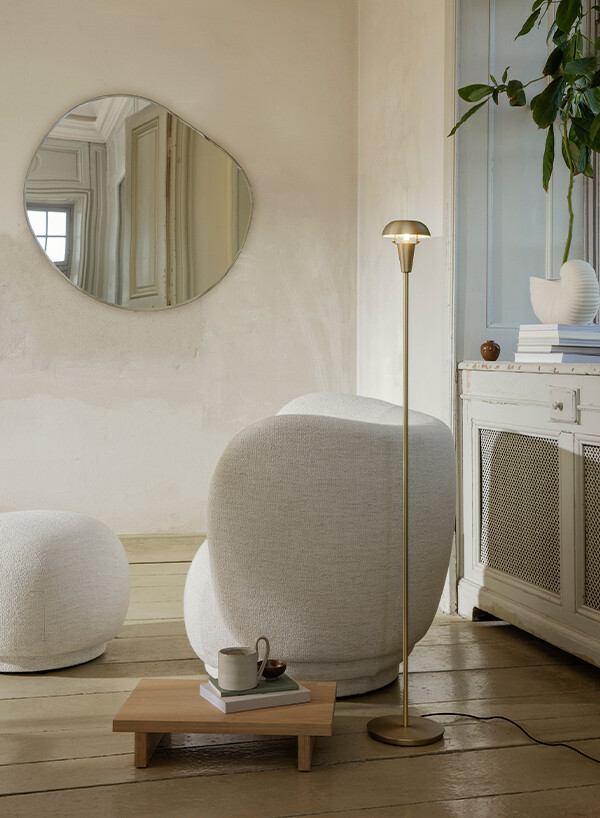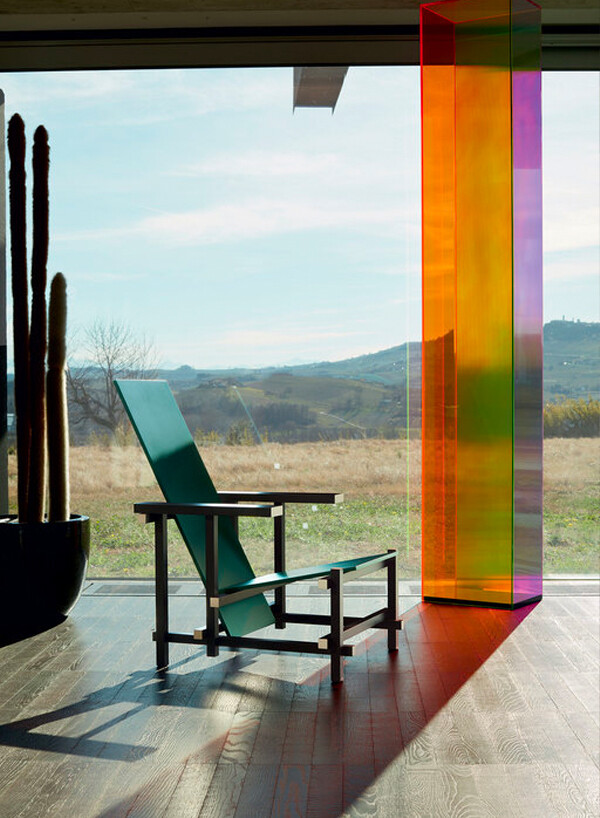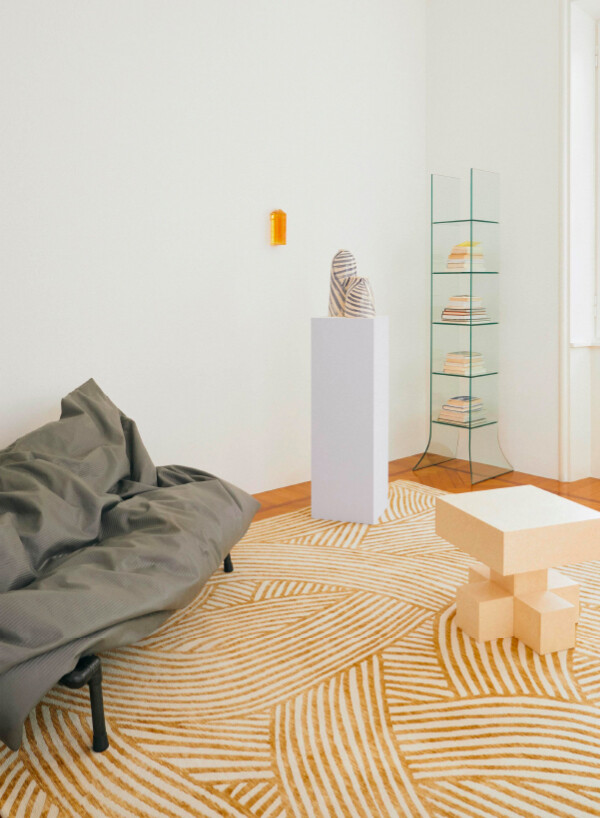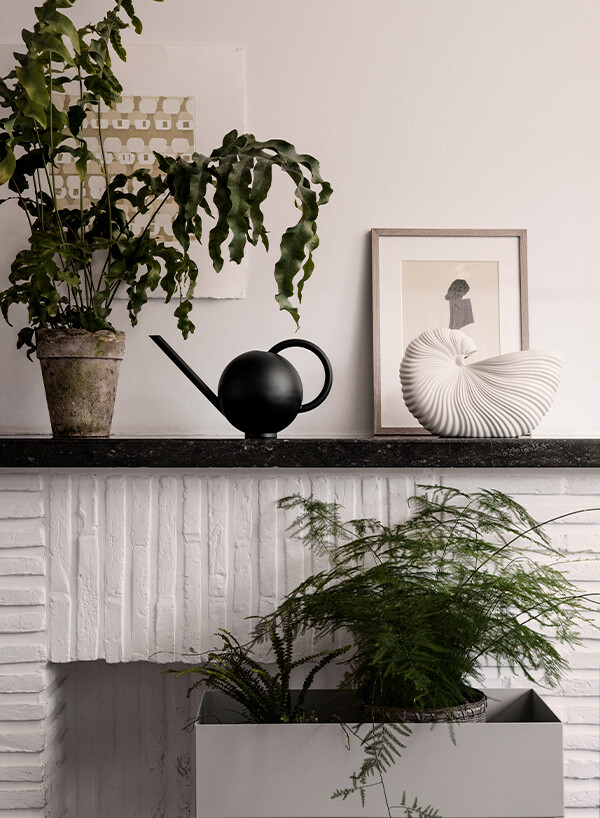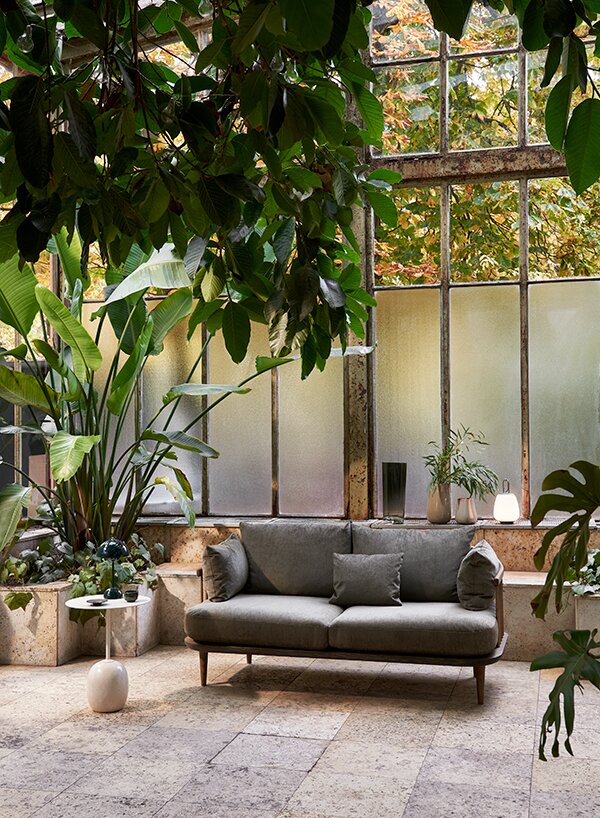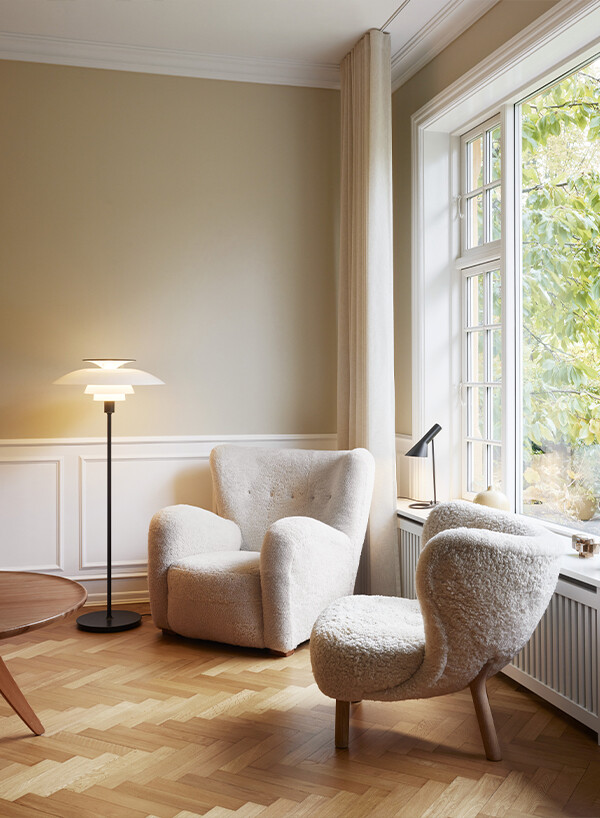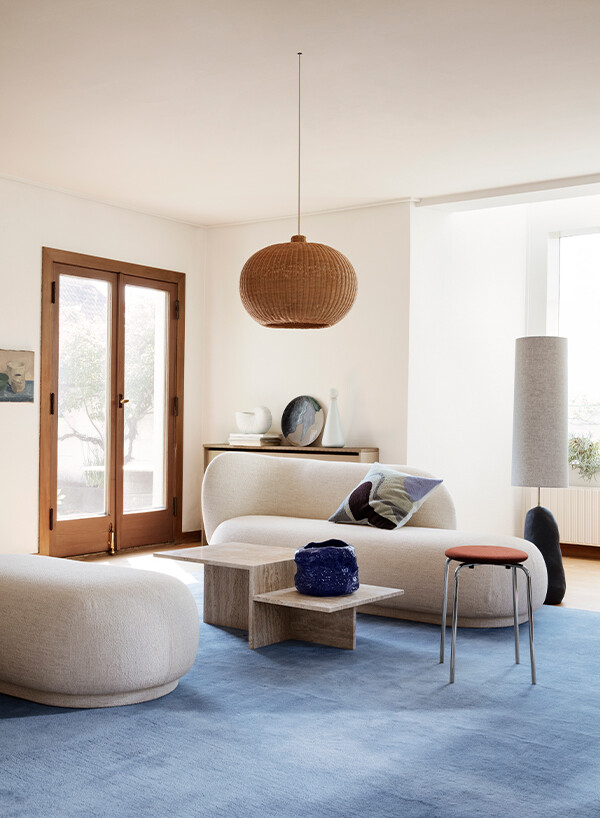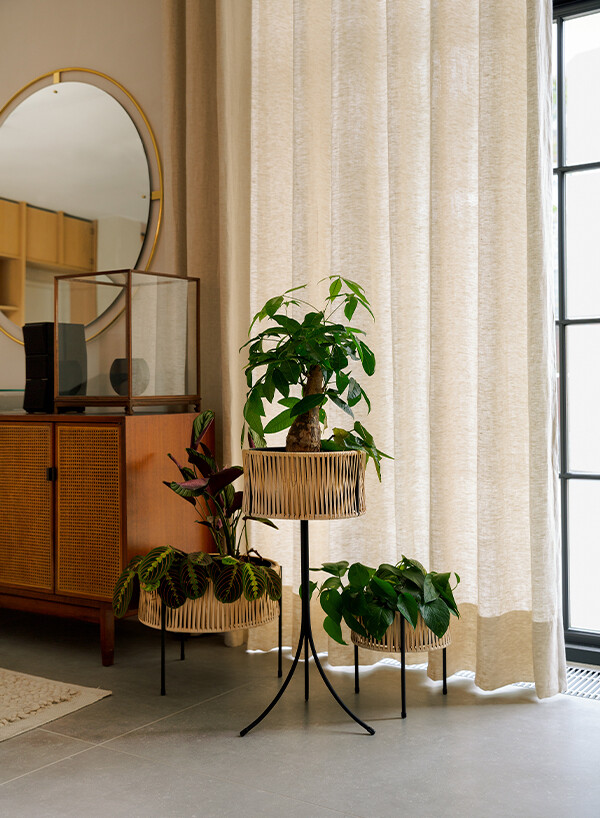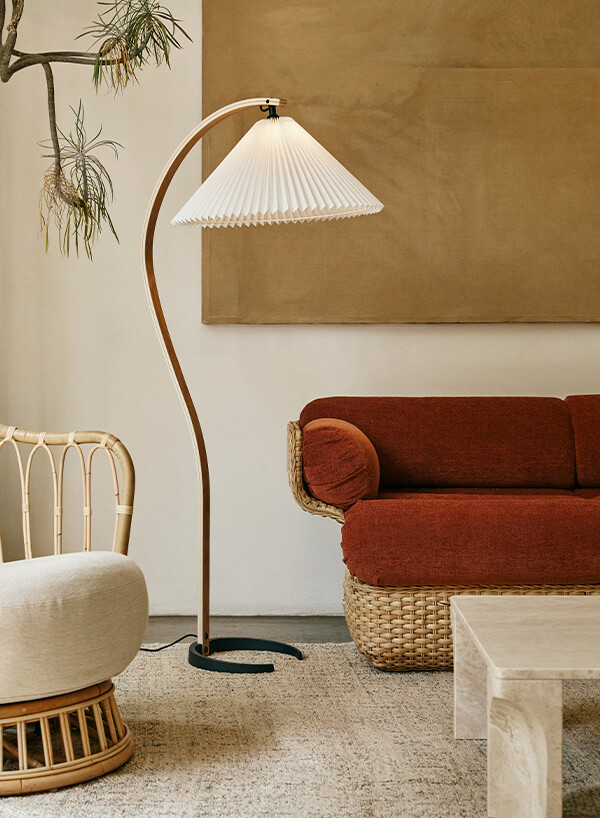Discovering your design aesthetic
The design world is full of terms and phrases to define aesthetics and styles. Interior design continues to take influence from styles and cultures, merging and blending different trends with new ideas and aesthetics constantly emerging.
Deciphering these terms and deciding which aesthetics resonate with you can be an overwhelming thing to understand.
From the distinguished stylings of Mid-Century Modern to the vibrant elements of Biophilic design, we take a moment to spotlight a few of our favourite terms and help you find your fit.
Mid-century Modern
Considered a subset of modern design that became popular post World War Two, Mid-Century design has remained a steadfast aesthetic for many. Designers like Charles and Ray Eames, Florence Knoll and Arne Jacobsen rose in popularity during the mid-century era, creating archetypal designs, and contrasting sleek legs with innovative shapes. Their furniture and lighting pieces have become icons within the design world and continue to appear in interiors that champion this design style today.
A highly influential design style, Mid-Century Modern aesthetics often follow a few key characteristics. Due to the lack of resources after the war, the designers needed to be creative with what they had available, using more economical methods to manufacture materials. Materials like plywood, proven effective during the war, rose in popularity due to their versatility and durability. Mid-century style saw colour play an integral part, so bold accent colours like those seen in the Vitra Eames Storage Unit or House of Finn Juhl Sideboard are included in contemporary spaces to create that Mid-Century Modern feel. The design style is showcased in a wide range of popular media, including the popular tv show, Mad Men. Discover some of the most iconic Mid-Century pieces in our Mid-Century design hub.
Japandi
As the denomination between Japanese and Scandinavian design, Japandi pulls equally from each concept. Taking influences from the hyper-functional stylings of Scandinavian design and blending it with minimal Japanese aesthetics, the design style emphasises the similarities and complements any differences. Heavily focused on simplicity, the design style encourages peaceful environments through clean lines, neutral tones and simple paired-back designs.
Both Japan and Scandinavia place a lot of value on natural materials and craftsmanship. As a result, it makes sense that the style of Japandi is rooted in beautiful, high-quality craftsmanship, creating timeless pieces that last. Works like the Hashira collection from the Danish design brand Audo Copenhagen demonstrates how the two aesthetics combine to create effortless Japandi stylings. Influenced by the delicate nature of Japanese lanterns, the lamp makes a significant impact on your space, while the portability and modern materials provide much-needed functionality. Styling a room with pieces like the Vitra Butterfly Stool or ferm LIVING Kona Side Table creates the tranquil atmosphere that is so integral to Japandi.
Postmodern
The postmodern design movement looked to celebrate unconventional approaches, prioritising form over function and celebrating contradictions, complexities and the unusual. This movement found prominence in interior design in the 1970s. Stylings like the bold and bright aesthetic associated with the 1980s are born from postmodern design. The Memphis Group, for example, looked to push past the rigidity of modernism and create a groundbreaking aesthetic
At a glance, a postmodern style utilises bright colours, playful shapes and the mixing of materials. Designers incorporate materials like terrazzo, travertine, coloured glass and plastics, boucle and brass to achieve postmodernism's complex and colourful appearance.
The postmodern style that we see today appears reminiscent of the original postmodern style. Utilising iconic pieces like the unique Vitra Wiggle Side Chair or the eccentric Cassina 111 Wink Chair brings an expressive and playful nature to the space. Applying unusual forms like wiggles or curves softens the look and gives it a much more contemporary appearance.
Biophilic
Biophilic design has become more and more celebrated in the world of interiors, with many of us enjoying the resulting relationship with nature. This plant-first design has become increasingly attractive to our post-pandemic world, where time spent indoors only increased our want for a connection with the natural world. Incorporating greenery and natural elements connects the inside with the outdoors while providing positive mental and physical effects.
Visually, biophilic design looks to incorporate images of nature, whether through paintings, sculptures or botanical patterns. Some designers reference nature in their forms to portray this style, for example, the leaf-like shade of the Arum collection or the realistic Shell Pot by ferm LIVING. Incorporating natural materials and colours also provides an indirect experience of nature that curates a multisensory environment when combined with elements like plants and natural light.
While a significant focus of this aesthetic looks to incorporate plants, elevate this connection to nature by housing these plants in pieces like the USM Haller World of Plants Sideboard and the ferm LIVING Plant Box.
Organic Modern
Blooming from a foundation of simple lines and rounded shapes, the style of Organic Modern has strong ties to the simplistic and neutral tones of minimalism while bringing in natural textures often seen in Bohemian or Mid-century modern interiors. Weaving together organic shapes with rustic accessories provides a calming aesthetic that has struck a chord with contemporary interior lovers.
A design style that experienced a recent rise in popularity, Organic Modern is prominent in architectural elements like exposed wooden floors and curved and arched doorways—accentuating this style, carefully selected furniture pieces bring further interest. Introducing curvy shapes and natural textures like those seen in the Rico Divan, Pond Mirror and Oyster Wall Lamp from ferm LIVING add an organic element to interiors.
Bohemian
Often linked with the countercultural hippie movement in the 1960s, the beginnings of Bohemian style as we know it today originated in 19th-century France. Following the French Revolution, intellectuals like artists and writers embraced a nomadic lifestyle in which they expressed their creativity and defied conventions. The Bohemian sub-culture emerged with an expressive and eclectic attitude and has experienced many revivals and reincarnations since its beginning.
Today's Bohemian design pulls elements from different periods and places, creating a diverse and eclectic style that sparks interest. While the aesthetic has no precise colour palette, interiors often include earthy tones with the addition of textiles and patterns from around the world. Unlike the minimal stylings of Japandi or Organic modern, Bohemian welcomes maximalism and eccentricity. Encouraging the mixture of textures, patterns, woods and metals, one individual's Bohemian interior can look vastly different from another. Contemporary Bohemian stylings often feature rattan furniture pieces and beautiful wall hangings like the Nanimarquina Silhouette Tapestry.
Defining design aesthetics by looking at their history, influences, and key elements makes it far easier to understand them and know how best to integrate them into your space. You can discover what elements draw you in and begin building your ideal interior style to suit your tastes and lifestyle. It allows you to be braver when playing with styles or blending multiple aesthetics to create a style that is truly your own.
Discover more about design styles and explore our Scandinavian, Italian and British design hubs.
Discovering your design aesthetic
The design world is full of terms and phrases to define aesthetics and styles. Interior design continues to take influence from styles and cultures, merging and blending different trends with new ideas and aesthetics constantly emerging.
Deciphering these terms and deciding which aesthetics resonate with you can be an overwhelming thing to understand.
From the distinguished stylings of Mid-Century Modern to the vibrant elements of Biophilic design, we take a moment to spotlight a few of our favourite terms and help you find your fit.
Mid-century Modern
Considered a subset of modern design that became popular post World War Two, Mid-Century design has remained a steadfast aesthetic for many. Designers like Charles and Ray Eames, Florence Knoll and Arne Jacobsen rose in popularity during the mid-century era, creating archetypal designs, and contrasting sleek legs with innovative shapes. Their furniture and lighting pieces have become icons within the design world and continue to appear in interiors that champion this design style today.
A highly influential design style, Mid-Century Modern aesthetics often follow a few key characteristics. Due to the lack of resources after the war, the designers needed to be creative with what they had available, using more economical methods to manufacture materials. Materials like plywood, proven effective during the war, rose in popularity due to their versatility and durability. Mid-century style saw colour play an integral part, so bold accent colours like those seen in the Vitra Eames Storage Unit or House of Finn Juhl Sideboard are included in contemporary spaces to create that Mid-Century Modern feel. The design style is showcased in a wide range of popular media, including the popular tv show, Mad Men. Discover some of the most iconic Mid-Century pieces in our Mid-Century design hub.
Japandi
As the denomination between Japanese and Scandinavian design, Japandi pulls equally from each concept. Taking influences from the hyper-functional stylings of Scandinavian design and blending it with minimal Japanese aesthetics, the design style emphasises the similarities and complements any differences. Heavily focused on simplicity, the design style encourages peaceful environments through clean lines, neutral tones and simple paired-back designs.
Both Japan and Scandinavia place a lot of value on natural materials and craftsmanship. As a result, it makes sense that the style of Japandi is rooted in beautiful, high-quality craftsmanship, creating timeless pieces that last. Works like the Hashira collection from the Danish design brand Audo Copenhagen demonstrates how the two aesthetics combine to create effortless Japandi stylings. Influenced by the delicate nature of Japanese lanterns, the lamp makes a significant impact on your space, while the portability and modern materials provide much-needed functionality. Styling a room with pieces like the Vitra Butterfly Stool or ferm LIVING Kona Side Table creates the tranquil atmosphere that is so integral to Japandi.
Postmodern
The postmodern design movement looked to celebrate unconventional approaches, prioritising form over function and celebrating contradictions, complexities and the unusual. This movement found prominence in interior design in the 1970s. Stylings like the bold and bright aesthetic associated with the 1980s are born from postmodern design. The Memphis Group, for example, looked to push past the rigidity of modernism and create a groundbreaking aesthetic
At a glance, a postmodern style utilises bright colours, playful shapes and the mixing of materials. Designers incorporate materials like terrazzo, travertine, coloured glass and plastics, boucle and brass to achieve postmodernism's complex and colourful appearance.
The postmodern style that we see today appears reminiscent of the original postmodern style. Utilising iconic pieces like the unique Vitra Wiggle Side Chair or the eccentric Cassina 111 Wink Chair brings an expressive and playful nature to the space. Applying unusual forms like wiggles or curves softens the look and gives it a much more contemporary appearance.
Biophilic
Biophilic design has become more and more celebrated in the world of interiors, with many of us enjoying the resulting relationship with nature. This plant-first design has become increasingly attractive to our post-pandemic world, where time spent indoors only increased our want for a connection with the natural world. Incorporating greenery and natural elements connects the inside with the outdoors while providing positive mental and physical effects.
Visually, biophilic design looks to incorporate images of nature, whether through paintings, sculptures or botanical patterns. Some designers reference nature in their forms to portray this style, for example, the leaf-like shade of the Arum collection or the realistic Shell Pot by ferm LIVING. Incorporating natural materials and colours also provides an indirect experience of nature that curates a multisensory environment when combined with elements like plants and natural light.
While a significant focus of this aesthetic looks to incorporate plants, elevate this connection to nature by housing these plants in pieces like the USM Haller World of Plants Sideboard and the ferm LIVING Plant Box.
Organic Modern
Blooming from a foundation of simple lines and rounded shapes, the style of Organic Modern has strong ties to the simplistic and neutral tones of minimalism while bringing in natural textures often seen in Bohemian or Mid-century modern interiors. Weaving together organic shapes with rustic accessories provides a calming aesthetic that has struck a chord with contemporary interior lovers.
A design style that experienced a recent rise in popularity, Organic Modern is prominent in architectural elements like exposed wooden floors and curved and arched doorways—accentuating this style, carefully selected furniture pieces bring further interest. Introducing curvy shapes and natural textures like those seen in the Rico Divan, Pond Mirror and Oyster Wall Lamp from ferm LIVING add an organic element to interiors.
Bohemian
Often linked with the countercultural hippie movement in the 1960s, the beginnings of Bohemian style as we know it today originated in 19th-century France. Following the French Revolution, intellectuals like artists and writers embraced a nomadic lifestyle in which they expressed their creativity and defied conventions. The Bohemian sub-culture emerged with an expressive and eclectic attitude and has experienced many revivals and reincarnations since its beginning.
Today's Bohemian design pulls elements from different periods and places, creating a diverse and eclectic style that sparks interest. While the aesthetic has no precise colour palette, interiors often include earthy tones with the addition of textiles and patterns from around the world. Unlike the minimal stylings of Japandi or Organic modern, Bohemian welcomes maximalism and eccentricity. Encouraging the mixture of textures, patterns, woods and metals, one individual's Bohemian interior can look vastly different from another. Contemporary Bohemian stylings often feature rattan furniture pieces and beautiful wall hangings like the Nanimarquina Silhouette Tapestry.
Defining design aesthetics by looking at their history, influences, and key elements makes it far easier to understand them and know how best to integrate them into your space. You can discover what elements draw you in and begin building your ideal interior style to suit your tastes and lifestyle. It allows you to be braver when playing with styles or blending multiple aesthetics to create a style that is truly your own.
Discover more about design styles and explore our Scandinavian, Italian and British design hubs.







